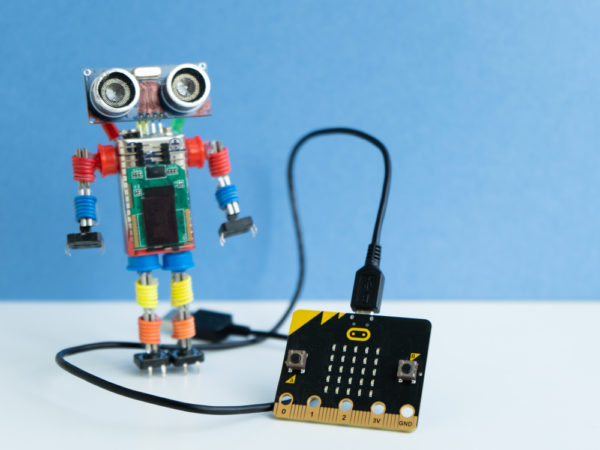Technology Resources
The Ultimate Guide to micro:bit Add-ons and Extensions
The micro:bit is a popular tool to use for learning how to program physical devices, which is the foundation of robotics. The micro:bit is powerful as a standalone device, but adding other devices to it to makes it even better at helping people new to computer programming learn the basics of coding and computational thinking.
Third-party companies have created a a lot of add-ons and accessories for the micro:bit since its introduction. This guide will help you weed through them so you can make informed decisions about the best ones to buy for your purpose.
Lights and LEDs
We have all become familiar with LEDs as an efficient lighting source. LEDs can be placed in different configurations, like the array on the micro:bit, where each LED can be turned on or off separately from the rest to make patterns and animations.
Neopixels
Neopixels are another type of LED that differ from the standard LEDs in several ways:
- They each have their own controller that makes it possible to control the color and brightness of each individual Neopixel.
- Neopixels can be individually controlled when they are daisy-chained together.
- They are available in many formats like rings, grids, and flexible strips which makes popular for a variety of art and wearable projects.
Sensors
Sensors are used to identify physical phenomena like light or sound levels, motion, moisture levels, or the existence of an electric current. In physical programming, the controlling device gathers information from sensors and uses it to determine what action to perform. For instance, if a light sensor recognizes low light, it might pass a signal to the main program that will then turn a light.
Motion
Hobby Motors
Hobby motors are simple motors that are either on or off. They operate on a direct current (DC) and the speed of the motor depends on the voltage of the electricity powering them. They are often used in small projects like model cars, robots, and other electronic projects. A controller can be added to them, and then code cand be written to control their direction and speed through the controller.
Servo Motors
- Standard servos – These servos can rotate 180°. They have a controller that can sense their exact radial location, which gives you the ability to control the degree of the rotation. They are used to make walking robots, grippers, and rudders on boats. Most servo motors are standard servos.
- Continuous rotation servos – The continuous rotation servo can turn a full 360°, so it is the type you will want if you plan to make a vehicle. It can be programmed to turn clockwise or counterclockwise. If you want to add two continuous rotation servos to a micro:bit, you will need more power than the micro:bit has, and you will need to add an extra component that can provide more power. See the Resources for a link.
Prototyping
Prototyping is the process of trying out a new design or idea without committing to a lot of up-front development. With electronics, it is often done using tools like breadboards and alligator clips. There are a lot of kits available for the micro:bit that contain a set of tools to use for prototyping.
List of Add-ons and Accessories


Pingback: micro:bit How to use a servo to make a waving hand | Wonkitz : Support for STEM Educators
Pingback: micro:bit Add-on: touch:bit | Wonkitz : Support for STEM Educators